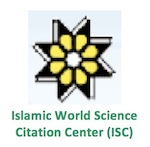


Google Scholar citation report
Citations : 5373
ASEAN Journal of Psychiatry received 5373 citations as per google scholar report
ASEAN Journal of Psychiatry peer review process verified at publons
| Journal Name | ASEAN Journal of Psychiatry (MyCite Report) | ||||
|---|---|---|---|---|---|
| Total Publications | 456 | ||||
| Total Citations | 5688 | ||||
| Total Non-self Citations | 12 | ||||
| Yearly Impact Factor | 0.93 | ||||
| 5-Year Impact Factor | 1.44 | ||||
| Immediacy Index | 0.1 | ||||
| Cited Half-life | 2.7 | ||||
| H-index | 30 | ||||
| Quartile |
|
- Anxiety Disorders
- Behavioural Science
- Biological Psychiatry
- Child and Adolescent Psychiatry
- Community Psychiatry
- Dementia
- Community Psychiatry
- Suicidal Behavior
- Social Psychiatry
- Psychiatry
- Psychiatry Diseases
- Psycho Trauma
- Posttraumatic Stress
- Psychiatric Symptoms
- Psychiatric Treatment
- Neurocognative Disorders (NCDs)
- Depression
- Mental Illness
- Neurological disorder
- Neurology
- Alzheimer's disease
- Parkinson's disease
Abstract
USE OF MIND BODY COMPLEMENTARY THERAPIES (MBCTs) AND HEALTH RELATED QUALITY OF LIFE (HRQoL) OF CANCER PATIENTS
Author(s): Maryam Farooqui; Mohamed Azmi Hassali; Aishah Knight Abdul Shatar; Asrul Akmal Shafie; Muhammad Aslam Farooqui; Fahad Saleem; Noman-ul Haq; Habibah Binti Ayob; Ch Noriah OthmanObjectives: Prayers, spiritual healing, yoga, meditation, t’ai chi, qigong and support groups are classified as mind body complementary therapies (MBCTs). The study aimed to examine the prevalence of MBCTs use and the Health Related Quality of Life (HRQoL) in a group of Malaysian cancer patients. Methods: This crosssectional study was conducted on 184 cancer patients at the oncology clinic of Penang general hospital, Malaysia. MBCTs was assessed using a self- administered questionnaire while the HRQoL of the participants was assessed by using the European Organization for Research and Treatment of Cancer Quality of Life Questionnaire (EORTC QLQ-C30). Results: Among the complementary and alternative medicines (CAM) users, 75(40.7%) patients self-reported using MBCTs while having cancer. Majority of MBCTs users were female 60(80%, p=0.01), aged between 38 and 57 (58%), and were of Malay ethnicity (61%). Socio-demographic factors including age (r=0.15, p=0.03) and monthly house-hold income (r= -0.25, p<0.001) were significantly correlated with MBCTs use. Prayers for health reasons was the most frequently practised MBCTs modality, followed by spiritual practices 20(10.8%), meditation 7(5.9%), t’ai chi 7(3.8%), music therapy 4(2.1%), qigong 1(0.5%), hypnotherapy 1(0.5%), and reiki 1(0.5%). Recommendations from friends and family members 53(70%) were the most common reasons of MBCTs use followed by patient’s own will 22(29.3%). Health related Quality of Life (HRQoL) scores showed significant difference in all functional and symptoms scores among MBCTs users and non-users (p<0.05). Conclusion: The study helps to identify numerous MBCTs commonly practised by a group of Malaysian cancer patients. Prayers specifically for health reasons and spiritual practices were somewhat common among patients. Viewing MBCTs, not as alternative but to complement conventional cancer therapies may help to address cancer patients’ emotional and psychological needs


























